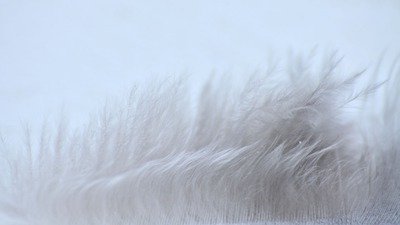
New Dinosaur-Bird Link?
This latest “missing link” is based on more than 20 fragments of leg, rib and shoulder bones found in the Patagonia region of Argentina.
This latest “missing link”, is described by Dr Fernando Novas in the 22 May 1997 issue of Nature.1 It is based on more than 20 fragments of leg, rib and shoulder bones found in the Patagonia region of Argentina. However, from those fragments, artists have drawn a silhouette of a creature with neck, head, jaws, tail etc. Somehow they have decided that the creature was carnivorous, 1.2 m tall at the hip and about 2.3 m long. It has been named Unenlagia comahuensis, meaning “half bird from north-west Patagonia” in a Latin adaptation of the language of the local Mapuche Indians.
Its pelvis is said to resemble both birds and theropod dinosaurs like the Velociraptor of Jurassic Park fame. But the main evidence for its intermediate status is its shoulder girdle, which was tilted outwards in a way which supposedly could have enabled flightless flapping.
What should the creationist response should be?
Let’s wait and see. In the last 12 months we have seen big media fanfare about “Mars life”, the “feathered dinosaur” and “176,000-year-old” Aboriginal remains. But the media never seems to give the same prominence to the refutation of these “evidence”, even by secular scientists. Naturally Creation magazine and the Answers in Genesis Website has dealt with all these issues.
The evidence is fragmentary. There is much room for interpretation. We should remember another alleged dino-bird link called Mononykus. This dinosaur had some bird-like features (but no trace of feathers), but newer evidence suggested that its stubby forelimbs could have been used for digging. Moles and other digging animals have wrists reminiscent of birds, and even have keeled sternums as birds do.2
Date: The creature is dated by evolutionists at 90 million years old—this is actually 55 million years less than the evolutionary date for Archaeopteryx, a perching bird with real flight feathers.3 Therefore Dr Novas admits that the creature cannot itself be a “missing link” but claims this is what the link must have looked like.
Not all evolutionists are convinced: Alan Feduccia, chairman of the biology department at the University of North Carolina, claims that the bird-like features were caused by convergent evolution. This is the evolutionists” explanation for similarities not caused by common ancestry. Creationists would attribute the similarities to a common designer. Feduccia is a staunch critic of the dinosaur to bird theory in general:
““It’s biophysically impossible to evolve flight from such large bipeds with foreshortened forelimbs and heavy, balancing tails,’ exactly the wrong anatomy for flight.”4
“The theropod origin of birds, in my opinion, will be the greatest embarrassment of paleontology of the 20th century.”5
Origin of feathers: Many evolutionists claim that dinosaurs developed feathers for insulation and later evolved and refined them for flight purposes. But this fails to explain how they evolved—scales are folds in skin; feathers are complex structures with a barb, barbules and hooks. They also originate in a totally different way, from follicles inside the skin in a manner akin to hair. Feather proteins (phi-keratins) are biochemically different from skin and scale proteins (alpha-keratins) as well. One researcher concludes:
“At the morphological level feathers are traditionally considered homologous with reptilian scales. However, in development, morphogenesis, gene structure, protein shape and sequence, and filament formation and structure, feathers are different.”6
There has been no report yet of a fossil showing scales turning into feathers or a leg turning into a wing.7
Footnotes
- F. E. Novas and P. F. Puerta, “New evidence concerning avian origins from the Late Creataceous of Patagonia”, Nature 387(6631):390-392, 1997; commentary in the same issue by L. M. Witmer “A New Missing Link” pp. 349-350.
- R. Monastersky, “A clawed wonder unearthed in Mongolia”, Science News 143(16):245, 1993; Creation 15(4):7, 1993.
- Alan Feduccia, “Evidence from Claw Geometry Indicating Arboreal Habits of Archaeopteryx,” Science 259:790-793.
- Quoted in Ann Gibbons, “New Feathered Fossil Brings Dinosaurs and Birds Closer”, Science 274:720-721, 1996.
- Quoted in Pat Shipman, “Birds do it … did dinosaurs?”, New Scientist 153(2067):27-31.
- A.H. Brush, “On the origin of feathers,” Journal of Evolutionary Biology 9:131-142, 1996.
- David Menton, “Bird evolution flies out the window”, Creation 16(4):16-19, 1996.
Recommended Resources

Answers in Genesis is an apologetics ministry, dedicated to helping Christians defend their faith and proclaim the good news of Jesus Christ.
- Customer Service 800.778.3390
- Available Monday–Friday | 9 AM–5 PM ET
- © 2025 Answers in Genesis






